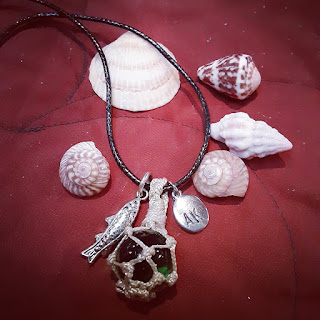The earliest evidence of glass floats being used by fishermen
comes from Norway in
1844 where glass floats were on gill nets in the great cod fisheries in
Lofoten. By the 1940s, glass had replaced wood or cork throughout much of
Europe, Russia, North America, and Japan. Japan started using the glass floats
as early as 1910. Today, most of the remaining glass floats originated in Japan because it had
a large deep sea fishing industry which made extensive use
of the floats; some made by Taiwan, Korea and China. In Japanese, the
floats are variably known as ukidama (浮き玉, buoy balls) or bindama (ビン玉, glass balls).
Glass floats have since been replaced by aluminum, plastic, or
Styrofoam.







